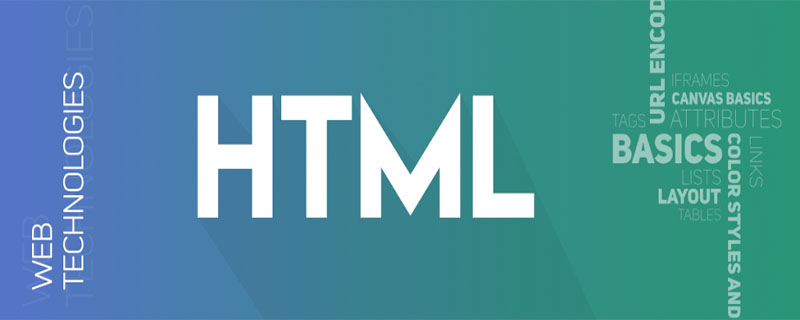
The origin of HTML

##The full English name of HTML is Hypertext Marked Language, that is, Hypertext Marked Language Text markup language. HTML is a markup language created in 1990 by Tim Berners-Lee, the inventor of the Web, and his colleague Daniel W. Connolly. It is an application of the standard generalized markup language SGML. (Recommended learning: html tutorial)
Hypertext documents written in HTML are called HTML documents, which can be independent of various operating system platforms (such as UNIX, Windows, etc.) . Using HTML language, the information that needs to be expressed is written into HTML files according to certain rules, recognized by a dedicated browser, and these HTML files are "translated" into identifiable information, that is, the web page you see now. Since 1990, HTML has been used as the information representation language of the WWW. Files described in the HTML language need to be displayed through the WWW browser. HTML is a language for creating web page files. It displays images, sounds, pictures, text animations, movies and other content through markup instructions (Tag). In fact, every HTML document is a static web page file. This file contains HTML instruction codes. These instruction codes are not a programming language, but a way to layout the display position of information on the web page. Markup structure language, easy to learn and understand, very simple. The universal application of HTML is the technology that brought about hypertext - jumping from one topic to another, jumping from one page to another, and linking to files on hosts around the world with the click of a mouse. The Hypertext Transfer Protocol specifies the rules and operations that browsers follow when running HTML documents. The formulation of the HTTP protocol enables browsers to have unified rules and standards when running hypertext. A hypermedia document on the World Wide Web is called a page (foreign language: page). The page where an organization or individual places the starting point on the World Wide Web is called the homepage (foreign language: Homepage) or homepage. The homepage usually includes pointers (hyperlinks) to other related pages or other nodes, so-called A hyperlink is a Uniform Resource Locator (Uniform Resource Locator, foreign language abbreviation: URL) pointer. By activating (clicking) it, the browser can easily obtain a new web page. This is also one of the most important reasons why HTML is widely used. An organic collection of pages that is logically viewed as a whole is called a website (Website or Site). Hypertext Markup Language (English abbreviation: HTML) is a markup language designed for "web page creation and other information that can be seen in a web browser". The essence of a web page is HyperText Markup Language. By combining it with other Web technologies (such as scripting languages, public gateway interfaces, components, etc.), powerful web pages can be created. Therefore, Hypertext Markup Language is the basis of World Wide Web (Web) programming, which means that the World Wide Web is built on the basis of hypertext. Hypertext Markup Language is called Hypertext Markup Language because the text contains so-called "hyperlink" points.The above is the detailed content of The origin of HTML. For more information, please follow other related articles on the PHP Chinese website!